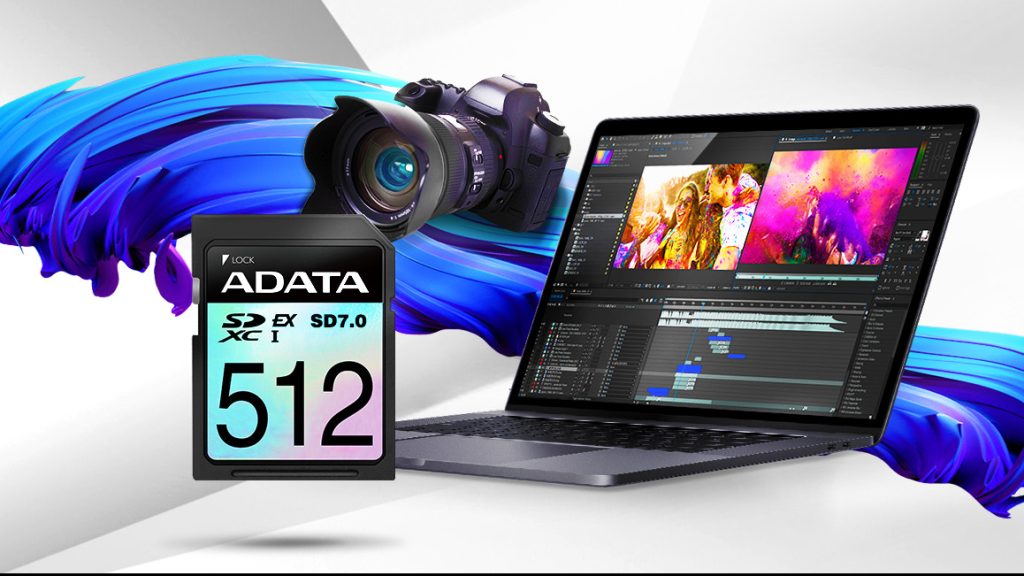Adata has introduced what it claims to be the first SD Express 8.0 compliant memory card, featuring impressive read and write speeds of 1.6 GB/s and 1.2 GB/s, respectively. This performance surpasses existing UHS-1 solutions by up to twelve times, and is four times faster than UHS-II, outperforming some entry-level NVMe SSDs. The Premier Extreme SD Express card will initially be available in a single 512GB capacity, with expectations of larger storage options emerging as the technology evolves.
Understanding SD Express Technology
First introduced in 2018 with the SD 7.0 standard, SD Express technology has only recently materialized in products, primarily due to the anticipated launch of the Nintendo Switch 2. SD Express cards function similarly to SSDs found in modern PCs and consoles, utilizing PCIe lanes and the NVMe protocol. Entry-level versions are rated for a maximum bus speed of 985 MB/s (PCIe 3.1 x1), while cards using PCIe 4.0 x2 can achieve speeds of up to 4 GB/s under the SD 8.0 standard.
Features of Adata’s New Memory Card
The Adata Premier Extreme lineup has been expanded to include an SD Express 8.0 card with a PCIe 3.0 x2 interface. It promises read speeds of 1.6 GB/s and write speeds of 1.2 GB/s. However, it’s important to note that the U3 and V30 ratings attached to this card only guarantee a minimum sustained write speed of 30 MB/s. In addition to its substantial 512GB capacity, the card incorporates built-in LPDC ECC technology and supports simultaneous access across multiple devices.
SD Express Card Ratings
SD Express cards have a distinct speed rating marked by an ‘E’ and a number; for instance, E150 indicates a sustained write speed of 150 MB/s. While many SD Express cards on the market haven’t been rated this way, they still adhere to the traditional U3/V30 speed classifications.
Market Outlook and Pricing
Despite their advancements, SD Express cards are likely to see limited use beyond the Nintendo Switch 2 and professional-grade video equipment, as most smartphones have moved away from expandable storage options. Integrating SD Express requires a unique connector and sacrifices some PCIe lanes from the system-on-chip, making it less appealing for mobile devices that rely on non-upgradeable UFS and NVMe storage configurations.
MicroSD Express cards also come with a higher price tag, averaging up to 25 cents per GB compared to retail SSDs, which typically range from 5 to 6 cents per GB. Based on similar NAND flash technology, it is anticipated that costs for SD Express memory cards will decrease as production scales up. While Adata has not yet disclosed pricing or availability for this new card, further information is expected at the upcoming Computex event.

